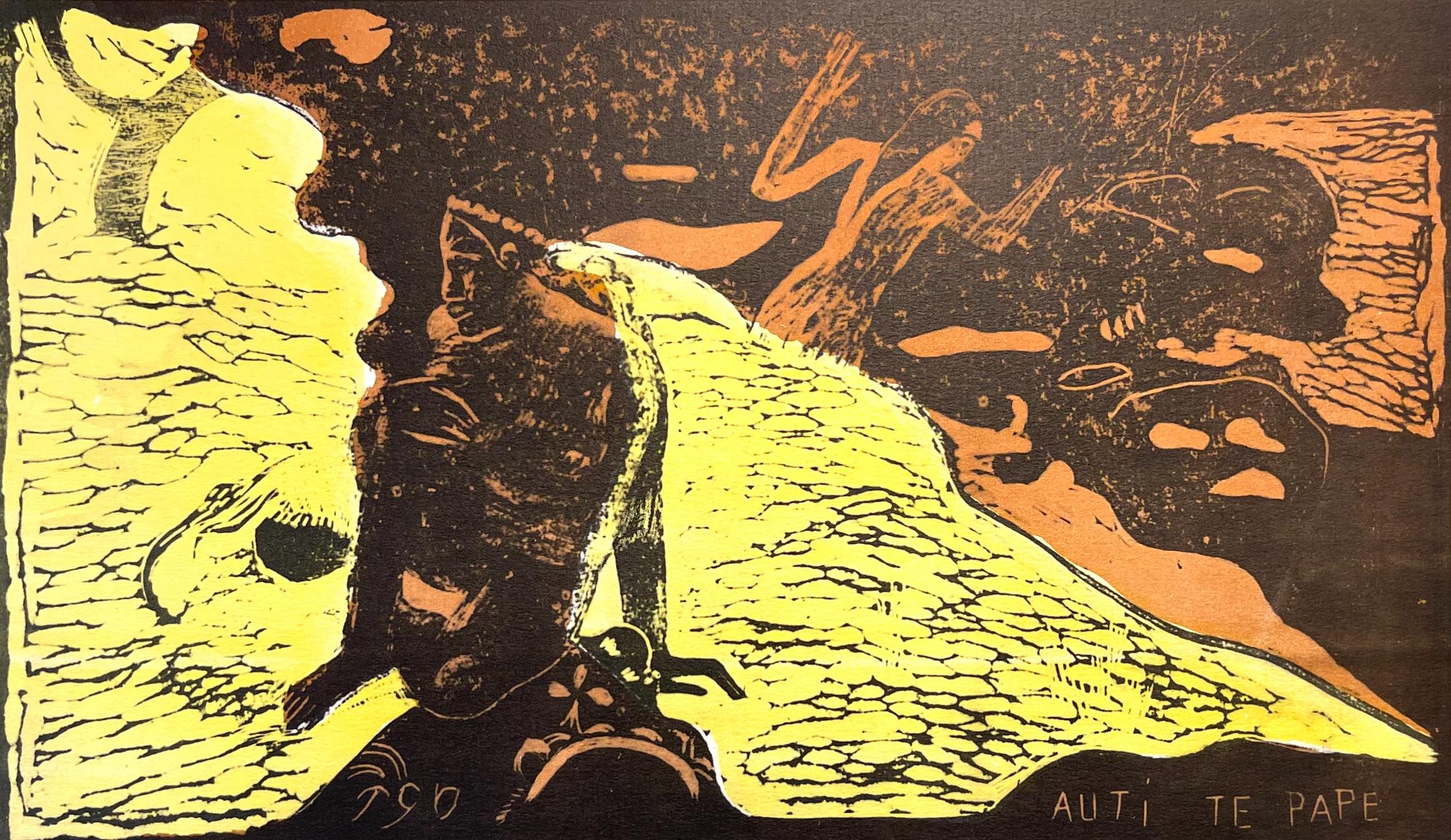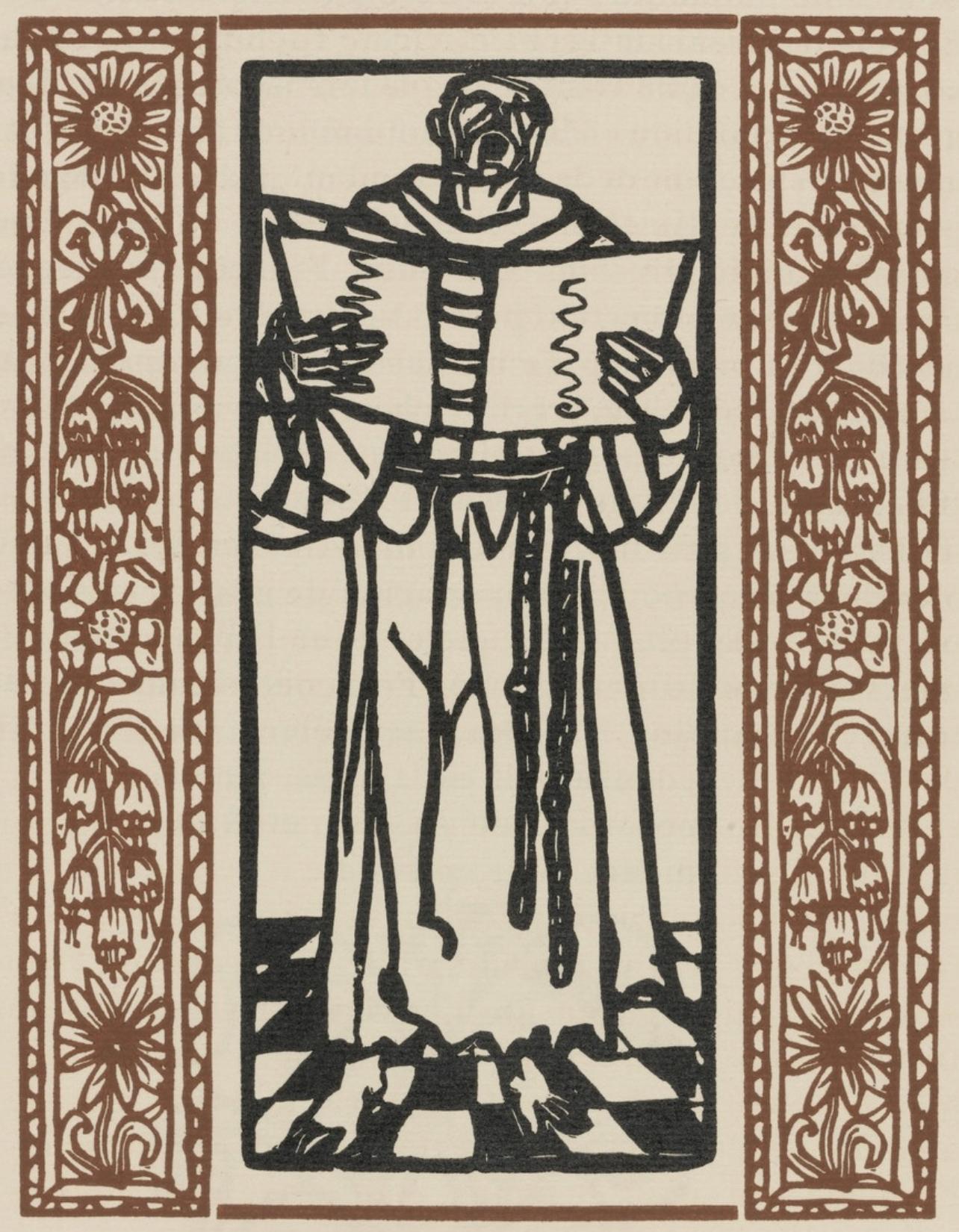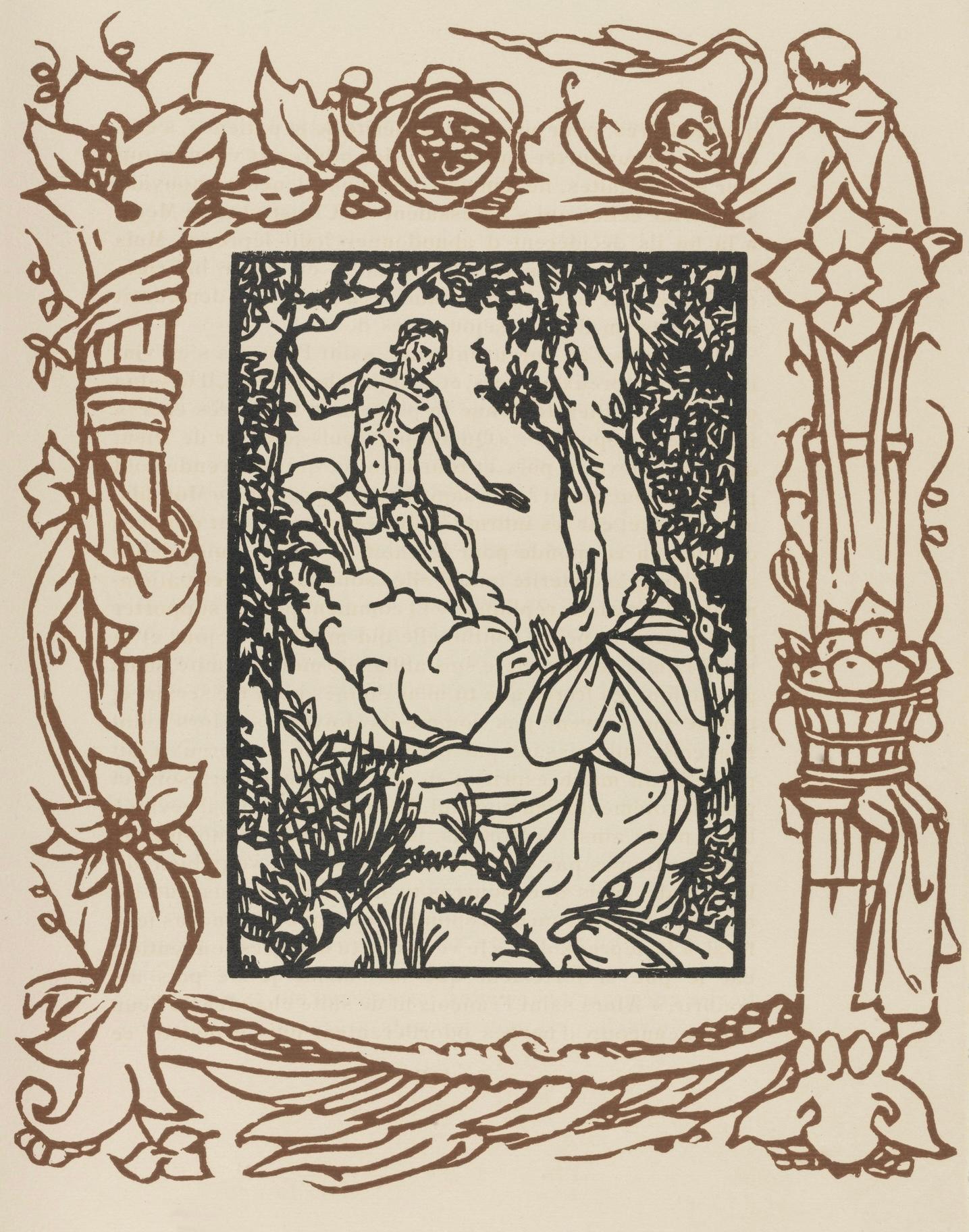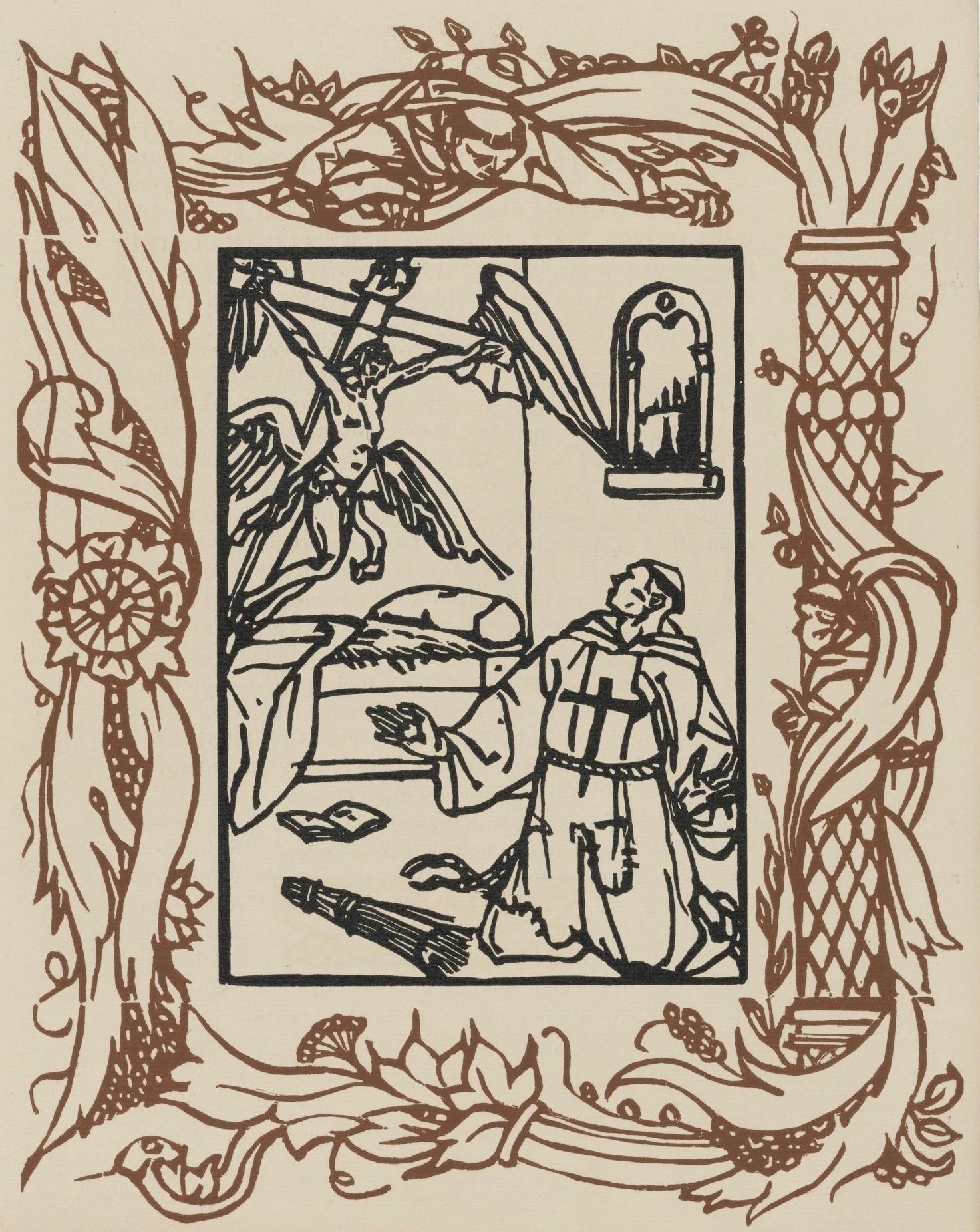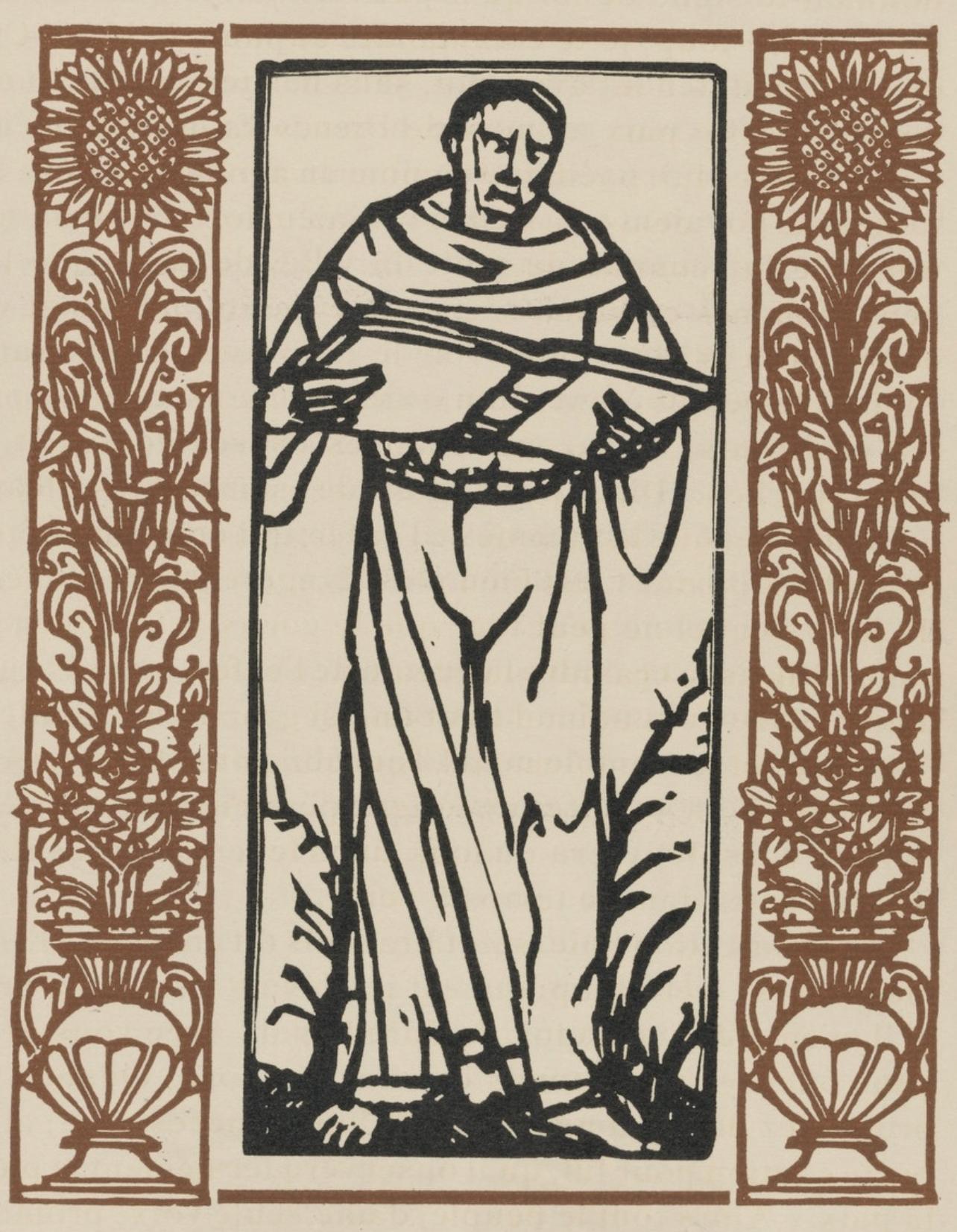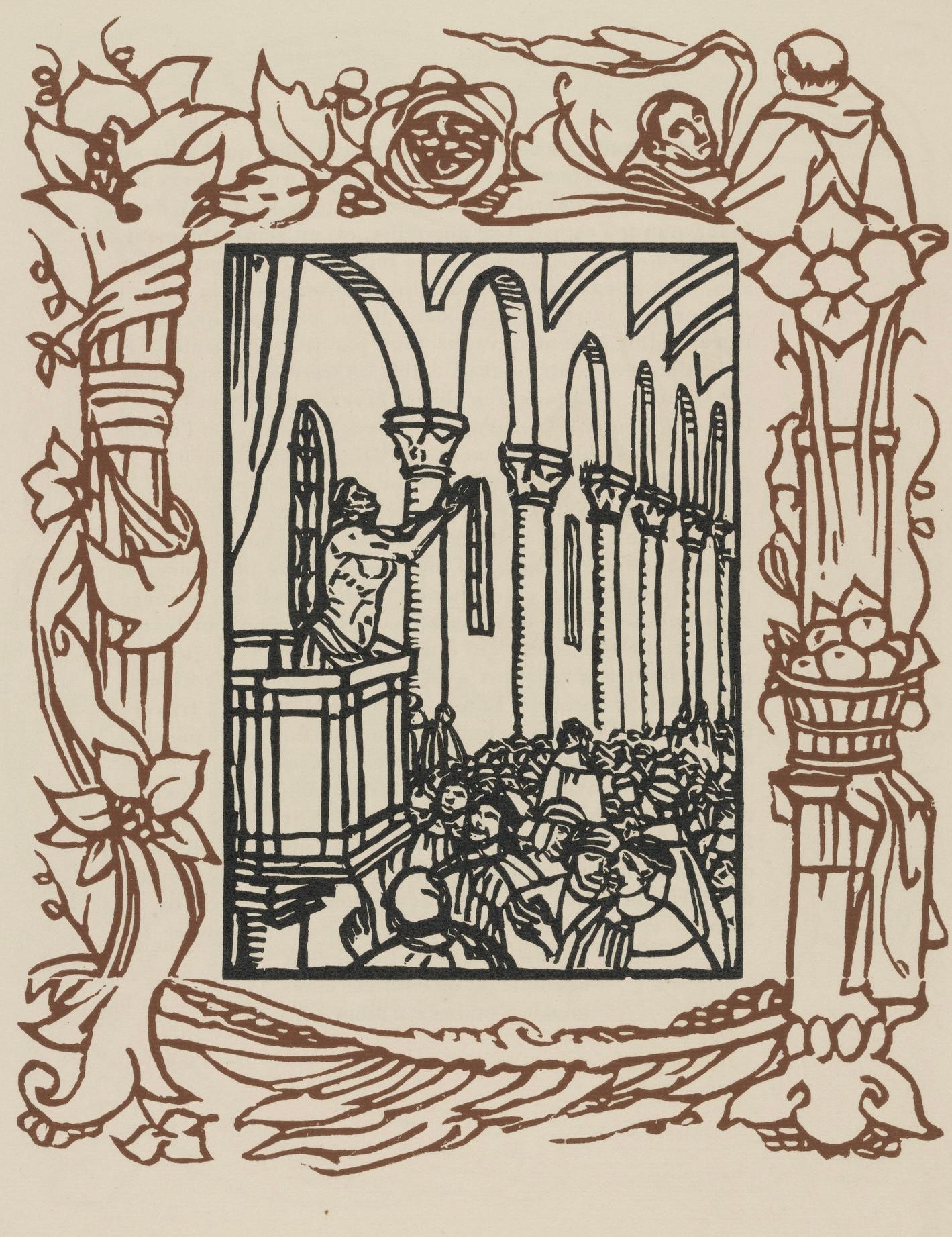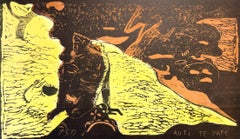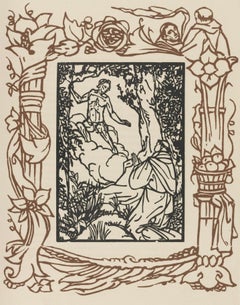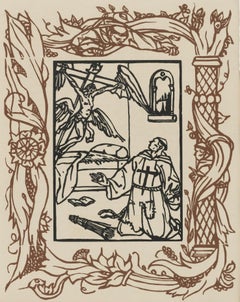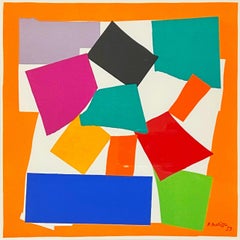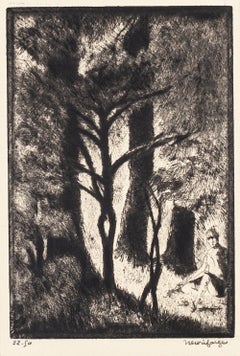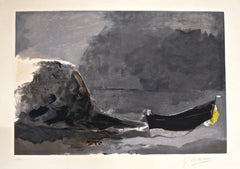Items Similar to Gauguin, Be in Love and You will be Happy, Gauguin (after)
Want more images or videos?
Request additional images or videos from the seller
1 of 10
Gauguin, Be in Love and You will be Happy, Gauguin (after)1946
1946
About the Item
Woodcut on vélin Utopian paper. Unsigned and unnumbered, as issued. Good Condition. Notes: From the folio, Gauguin, A portfolio of 12 color woodblocks, Paul Gauguin, French, 1848-1903 from the collection of the Museum Of Fine Arts, Boston, 1946. Rendered by Albert Carman (1899-1949); published the Museum Of Fine Arts, Boston and The Studio Publications, Inc., New York and London; printed by Holme Press Inc., New York, in an edition of MMMD. Excerpted from the folio, Paul Gauguin and Emil Bernard at Pont-Aven, Brittany, in 1888, each made a bas-relief, wooden panel to decorate a piece of furniture for a friend. In order to keep a record of their designs, a few inked impressions were made on paper. The illustration at left is a reproduction of a print which is possibly one of the above mentioned. It is further possible that this experiment later gave Gauguin the idea of making woodcuts. Just as his work in painting expressed a revolt against the overemphasis on factual representation of the nineteenth century in favor of decorative pattern and color, so also his woodcuts leaned strongly to the same side of the balance. Ten of the cuts reproduced (all excepting Soyez Amoureuses and Changement de Residence), which constitute the whole of his best known series, were made at Pont-Aven beginning in the fall of 1894, after Gauguin's return from his first trip to Tahiti and after he broke his ankle. They were at first roughly cut with a common carpenter's gouge, and the flat surfaces sandpapered and engraved with a sharp in-strument, perhaps an engraver's burin. A few trial proofs were printed in black ink only. Then the hollows were deepened with a woodcutter's gouge and highlights were added. An edition of thirty to fifty impressions of each subject, with the addition of color blocks (one, two or three), was made by Louis Roy, a painter friend of Gauguin's. The use of the added blocks was doubtless sanctioned by Gauguin, but by which man they were made, by him or by Roy, is questionable in my mind and in that of Mr. Henry
P. Rossiter, Curator of Prints at the Boston Museum of Fine Arts. The fact that in all the later two-color woodcuts made by Gauguin during his second and final visit to Tahiti (2895-1903) both blocks have engraving on the flat surfaces would in some measure substantiate the doubt, hitherto unmentioned by any commentator. The two very beautiful remaining reproductions in the portfolio are examples of the later work, which illustrate my point. —W. G. Russell Allen. Rendered by Albert Carman; published by American Studio Books
New York and London.
PAUL GAUGUIN (1848-1903) was a French painter, sculptor, printmaker, ceramist, and writer, whose work has been primarily associated with the Post-Impressionist and Symbolist movements. He was also an influential practitioner of wood engraving and woodcuts as art forms. While only moderately successful during his lifetime, Gauguin has since been recognized for his experimental use of color and Synthetist style that were distinct from Impressionism. Gauguin was born in Paris in 1848, amidst the tumult of Europe's revolutionary year. In 1850, Gauguin's family settled in Peru, where he experienced a privileged childhood that left a lasting impression on him. Later, financial struggles led them back to France, where Gauguin received formal education. Initially working as a stockbroker, Gauguin started painting in his spare time, his interest in art kindled by visits to galleries and exhibitions. The financial crisis of 1882 significantly impacted his brokerage career, prompting a full-time shift to painting. Gauguin's art education was largely self-taught and informal, shaped significantly by his associations with other artists rather than academic training. His entry into the art world was facilitated by his acquaintance with Camille Pissarro, a leading Impressionist. Pissarro took on a mentor role for Gauguin, introducing him to other Impressionist artists and techniques.
He exhibited with the Impressionists in the early 1880s, but soon began developing his distinct style, characterized by a bolder use of color and less traditional subject matter. His work in Brittany and Martinique showcased his inclination towards depicting native life and landscapes. By the 1890s, Gauguin's art took a significant turn during his time in Tahiti, then a French colony, where he sought a refuge from the Western civilization, driven by the colonialist tropes of exoticism prevalent at the time. During that time, he controversially married three adolescent Tahitian girls with whom he later fathered children. Gauguin's later years in Tahiti and the Marquesas Islands were marked by health issues and financial struggles. His paintings from that period, characterized by vivid colors and Symbolist themes, would prove highly successful among the European viewers for their exploration of the relationships between people, nature, and the spiritual world. Gauguin's art became popular after his death, partially from the efforts of dealer Ambroise Vollard, who organized exhibitions of his work late in his career and assisted in organizing two important posthumous exhibitions in Paris. His work was influential on the French avant-garde and many modern artists, such as Pablo Picasso and Henri Matisse, and he is well known for his relationship with Vincent and Theo van Gogh.
- Creation Year:1946
- Dimensions:Height: 13 in (33.02 cm)Width: 17 in (43.18 cm)
- Medium:
- Movement & Style:
- After:Paul Gauguin (1848-1903, French)
- Period:
- Condition:
- Gallery Location:Auburn Hills, MI
- Reference Number:1stDibs: LU1465214651322
About the Seller
4.9
Gold Seller
Premium sellers maintaining a 4.3+ rating and 24-hour response times
Established in 1978
1stDibs seller since 2021
1,064 sales on 1stDibs
Typical response time: <1 hour
- ShippingRetrieving quote...Shipping from: Auburn Hills, MI
- Return Policy
Authenticity Guarantee
In the unlikely event there’s an issue with an item’s authenticity, contact us within 1 year for a full refund. DetailsMoney-Back Guarantee
If your item is not as described, is damaged in transit, or does not arrive, contact us within 7 days for a full refund. Details24-Hour Cancellation
You have a 24-hour grace period in which to reconsider your purchase, with no questions asked.Vetted Professional Sellers
Our world-class sellers must adhere to strict standards for service and quality, maintaining the integrity of our listings.Price-Match Guarantee
If you find that a seller listed the same item for a lower price elsewhere, we’ll match it.Trusted Global Delivery
Our best-in-class carrier network provides specialized shipping options worldwide, including custom delivery.More From This Seller
View AllGauguin, Women at the River (Auti te pape), Gauguin (after)
By Paul Gauguin
Located in Auburn Hills, MI
Woodcut on vélin Utopian paper. Unsigned and unnumbered, as issued. Good Condition. Notes: From the folio, Gauguin, A portfolio of 12 color woodblocks, Paul Gauguin, French, 1848-1903 from the collection of the Museum Of Fine Arts, Boston, 1946. Rendered by Albert Carman (1899-1949); published the Museum Of Fine Arts, Boston and The Studio Publications, Inc., New York and London; printed by Holme Press Inc., New York, in an edition of MMMD. Excerpted from the folio, Paul Gauguin and Emil Bernard at Pont-Aven, Brittany, in 1888, each made a bas-relief, wooden panel to decorate a piece of furniture for a friend. In order to keep a record of their designs, a few inked impressions were made on paper. The illustration at left is a reproduction of a print which is possibly one of the above mentioned. It is further possible that this experiment later gave Gauguin the idea of making woodcuts. Just as his work in painting expressed a revolt against the overemphasis on factual representation of the nineteenth century in favor of decorative pattern and color, so also his woodcuts leaned strongly to the same side of the balance. Ten of the cuts reproduced (all excepting Soyez Amoureuses and Changement de Residence), which constitute the whole of his best known series, were made at Pont-Aven beginning in the fall of 1894, after Gauguin's return from his first trip to Tahiti and after he broke his ankle. They were at first roughly cut with a common carpenter's gouge, and the flat surfaces sandpapered and engraved with a sharp in-strument, perhaps an engraver's burin. A few trial proofs were printed in black ink only. Then the hollows were deepened with a woodcutter's gouge and highlights were added. An edition of thirty to fifty impressions of each subject, with the addition of color blocks (one, two or three), was made by Louis Roy...
Category
1940s Post-Impressionist Figurative Prints
Materials
Woodcut
$716 Sale Price
20% Off
Free Shipping
Composition (Morane, N° 100), Les Petites Fleurs de St. Françoise, Émile Bernard
By Émile Bernard
Located in Auburn Hills, MI
Wood engraving on vergé d'Arches paper. Inscription: unsigned and unnumbered, as issued. Good condition. Notes: From the volume, Les Petites Fleurs de St. François, 1928. Published b...
Category
1920s Post-Impressionist Figurative Prints
Materials
Woodcut
$716 Sale Price
20% Off
Free Shipping
Composition (Morane, N° 100), Les Petites Fleurs de St. Françoise, Émile Bernard
By Émile Bernard
Located in Auburn Hills, MI
Wood engraving on vergé d'Arches paper. Inscription: unsigned and unnumbered, as issued. Good condition. Notes: From the volume, Les Petites Fleurs de St. François, 1928. Published b...
Category
1920s Post-Impressionist Figurative Prints
Materials
Woodcut
$716 Sale Price
20% Off
Free Shipping
Composition (Morane, N° 100), Les Petites Fleurs de St. Françoise, Émile Bernard
By Émile Bernard
Located in Auburn Hills, MI
Wood engraving on vergé d'Arches paper. Inscription: unsigned and unnumbered, as issued. Good condition. Notes: From the volume, Les Petites Fleurs de St. François, 1928. Published b...
Category
1920s Post-Impressionist Figurative Prints
Materials
Woodcut
$716 Sale Price
20% Off
Free Shipping
Composition (Morane, N° 100), Les Petites Fleurs de St. Françoise, Émile Bernard
By Émile Bernard
Located in Auburn Hills, MI
Wood engraving on vergé d'Arches paper. Inscription: unsigned and unnumbered, as issued. Good condition. Notes: From the volume, Les Petites Fleurs de St. François, 1928. Published b...
Category
1920s Post-Impressionist Figurative Prints
Materials
Woodcut
$716 Sale Price
20% Off
Free Shipping
Composition (Morane, N° 100), Les Petites Fleurs de St. Françoise, Émile Bernard
By Émile Bernard
Located in Auburn Hills, MI
Wood engraving on vergé d'Arches paper. Inscription: unsigned and unnumbered, as issued. Good condition. Notes: From the volume, Les Petites Fleurs de St. François, 1928. Published b...
Category
1920s Post-Impressionist Figurative Prints
Materials
Woodcut
$716 Sale Price
20% Off
Free Shipping
You May Also Like
L'escargot
By (after) Henri Matisse
Located in Washington, DC
Artist: Henri Matisse (after)
Title: L'escargot
Portfolio: The Last Works of Henri Matisse
Medium: Lithograph
Year: 1958
Edition: 2000
Framed Size: 17" x 17"
Sheet Size: 14" x 10 1/2...
Category
1950s Fauvist Landscape Prints
Materials
Lithograph
Au Bois de Boulogne - Original Etching by H. Farge - Mid 20th Century
Located in Roma, IT
Image dimensions: 16 x 11 cm.
Au Bois de Boulogne is an original modern artwork realized in the first decades of the XX Century by the French artist Henri Farge...
Category
Mid-20th Century Post-Impressionist Figurative Prints
Materials
Etching
Marine Noire - Lithograph after Georges Braque - 1956
Located in Roma, IT
Signed and numbered.
Editions of 400 prints.
published by Maeght, Paris
Literature Reference:
D. Vallier, Braque. L'oeuvre gravé, Flammarion, Paris 1982, n. 1044, p.296.
Image Dimensions :50 x 72...
Category
1950s Post-Impressionist Landscape Prints
Materials
Lithograph
Figures in the Landscape - Etching by J. A. Flour - 1916
By Jules Adrian Flour
Located in Roma, IT
Figures in the Landscape is an original artwork realized by Jules Adrian Flour in 1916. Original etching on paper.
The artwork is glued on cardboard. Hand-signed in pencil by the ar...
Category
1910s Post-Impressionist Figurative Prints
Materials
Etching
Marine Noire - Lithograph After Georges Braque - 1956
Located in Roma, IT
"Marine Noire" is a lithograph after the work of Georges Braque in 1956. The print is hand signed and numbered. This is an edition of 400 prints.
Bibliography: D. Vallier, Braque. L'oeuvre gravé, Flammarion, Paris 1982, n. 1044, p. 296.
Good conditions except for very light foxings and little folds on the corner.
Georges Braque (1882-1963) was a French Fauve painter who began to rethink his own painting style after admiring Picasso’s Les Demoiselles...
Category
1950s Post-Impressionist Landscape Prints
Materials
Lithograph
Bacchanale, Cubist Lithograph after Pablo Picasso
By Pablo Picasso
Located in Long Island City, NY
A lithograph from the Marina Picasso Estate Collection after the Pablo Picasso painting "Bacchanale". The original painting was completed circa 1922. In the 1970's after Picasso's d...
Category
1980s Fauvist Figurative Prints
Materials
Lithograph
